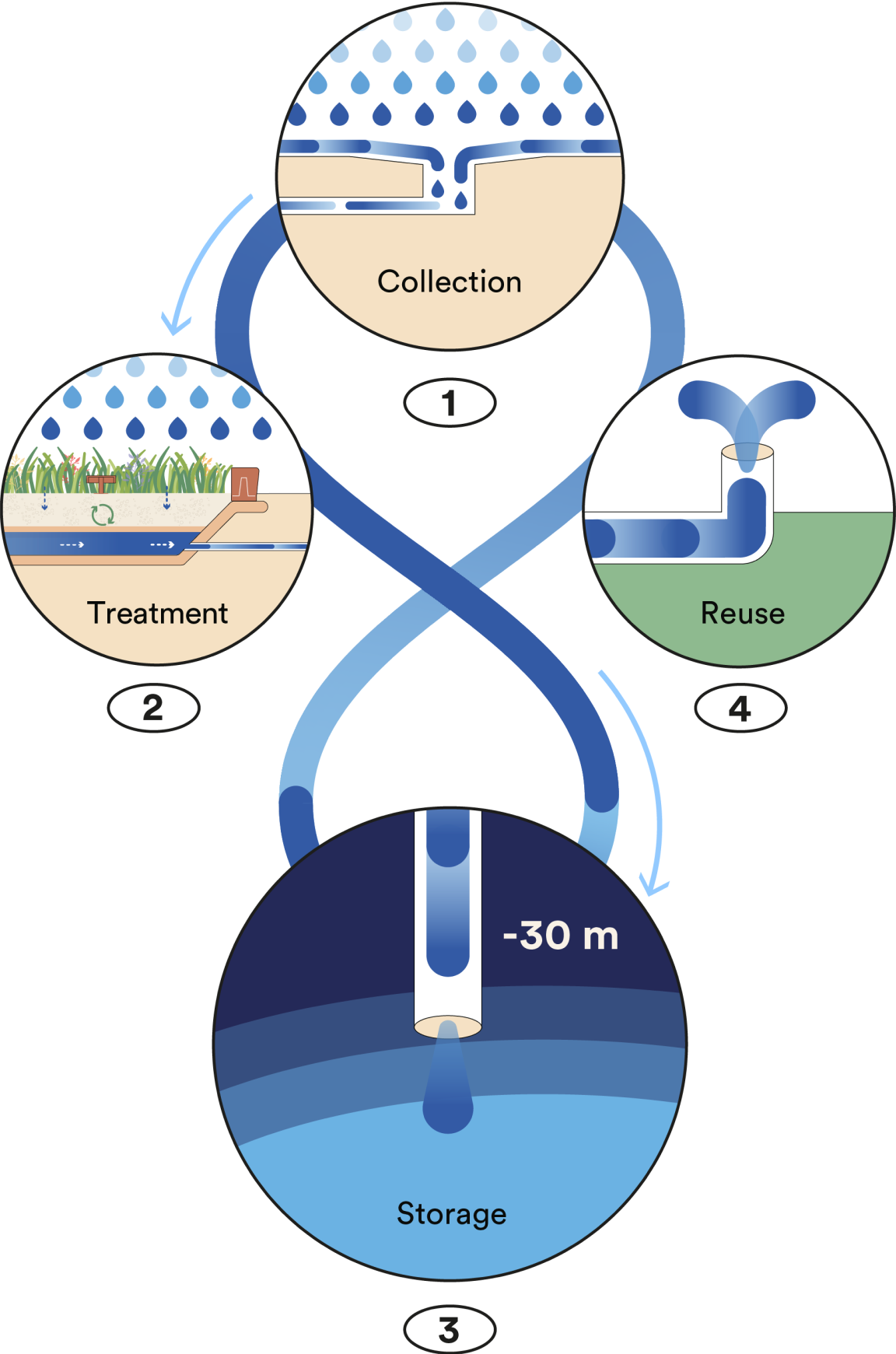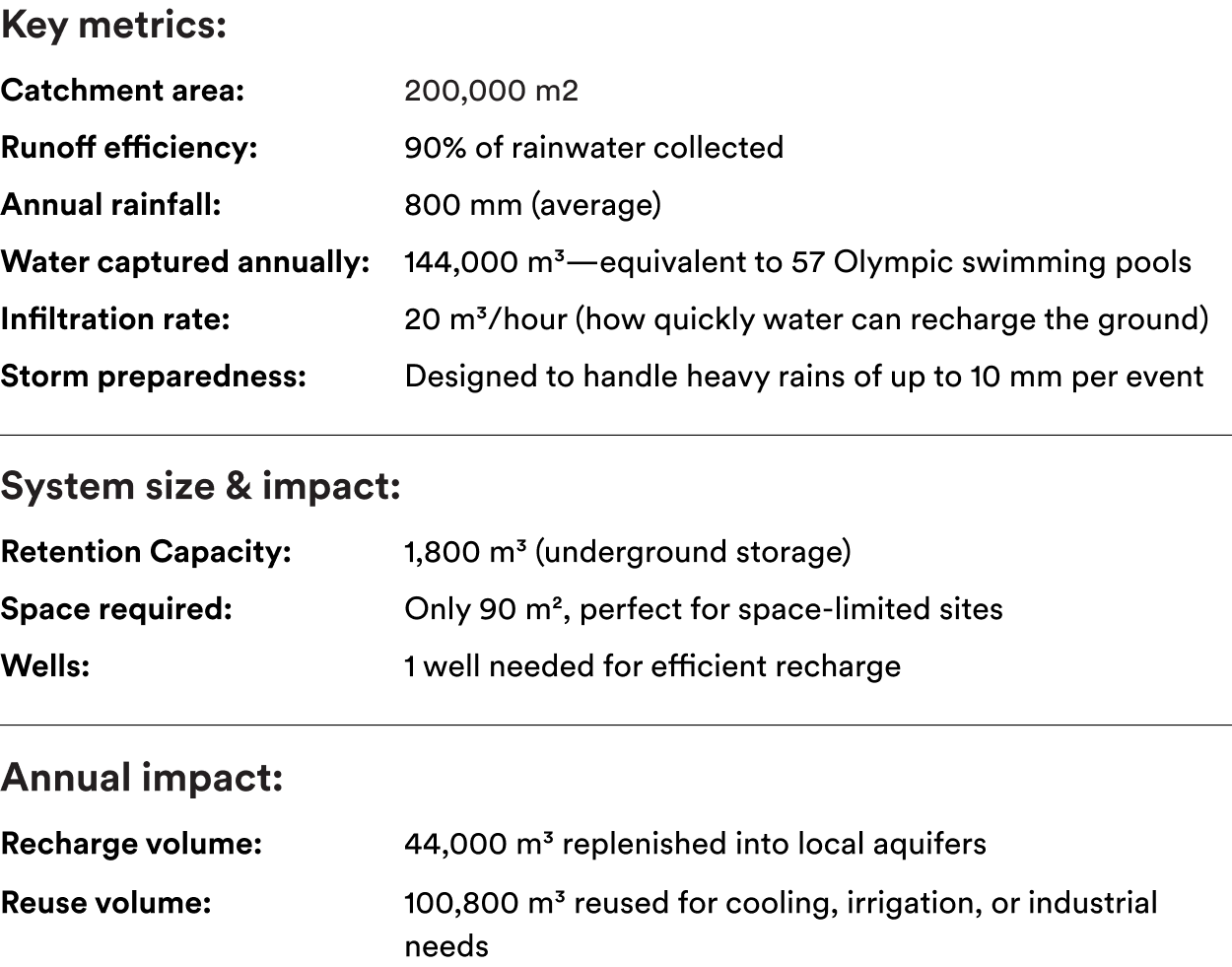Unlock the power of rain for a water positive future
Start your journey to water neutrality today and discover how much you can save by reusing rainwater.
Urban water challenges,
are you prepared?
Water scarcity, supply disruptions, and urban flooding are growing risks for cities. These challenges strain infrastructure and pose significant operational threats for businesses and developers.

Impactful figures
At risk from water-related disruptions.
By 2050, 60% of the world’s population may lack access to sufficient water.
Understanding the water risk
Water scarcity is an ever-increasing threat, with US$300 billion in value at risk due to water shortages, pollution, and climate impacts (CDP). By 2050, 60% of the global population could face insufficient access to water (IPCC). Industries like manufacturing, data, energy, and agriculture drive demand, intensifying the risk.
Water shortages, pollution, and climate impacts put over US$300 billion in value at risk globally (CDP). By 2050, 60% of the world’s population could face water shortages (IPCC). Industries like manufacturing, data centres, energy, and agriculture will increase demand, making water risks more severe.
The consequences for urban facilities
Operational downtime from water shortages
Rising water costs due to demand
Flood damage to infrastructure
Unstable groundwater affecting building foundations
Loss of biodiversity and degraded green spaces
Stormwater overflow causing logistical and health issues
Why current water solutions fall short
-
Traditional rainwater harvesting systems
Collect and store rainwater from rooftops and store it in tanks or cisterns.
Disadvantages:
Limited capacity, water quality degrades over time.
-
Underground water storage tanks
Store large volumes of water below ground, saving space and preventing evaporation.
Disadvantages:
Expensive to install and maintain, and difficult to access.
-
Greywater recycling systems
Reuse wastewater for non-potable uses, reducing overall water consumption.
Disadvantages:
High cost with potential water quality risks.
-
Desalination plants
Convert seawater into freshwater, providing a virtually unlimited water source in coastal areas.
Disadvantages:
Energy-intensive, costly, and environmentally harmful.
The smart, sustainable solution for cities
FieldFactors' BlueBloqs
At FieldFactors, we implement smart nature-based solutions that capture large volumes of rainwater to replenish the aquifers and make them available for later use.
Our BlueBloqs systems integrate advanced water treatment with aquifer storage and reuse. This compact, efficient solution captures rainwater, treats it, and stores it underground—perfect for urban areas where space is limited but water issues are critical.
How BlueBloqs solves urban water challenges
BlueBloqs collects and filters rainwater on-site, ensuring high-quality water suitable for aquifer storage and groundwater protection.
The system automates collection, storage, and reuse, creating a sustainable water source that reduces reliance on municipal supplies.
In urban settings, this allows for significant savings, flood prevention, and improved water security.
The solution in numbers
Project type sample
Sustainable water management for an industrial facility
Disclaimer: All information shown is for illustration purposes only. Actual project data and results may vary based on site conditions and specific requirements.
Why BlueBloqs is ideal for urban projects
-
Large capacity, small footprint
Maximize water storage using natural aquifers, ideal for areas with limited space
-
Year-round reliability
Ensure water availability and flood prevention even during extreme weather.
-
Tailored water solutions
Produce high-quality water for non-potable uses like irrigation, cooling, or industrial processes.
-
Sustain urban water balance
Replenish aquifers and stabilise groundwater levels, creating long-term water neutrality.
-
Flood prevention
Reduce pressure on stormwater systems, preventing floods and sewage overflows during heavy rainfalls.
Curious about your rainwater potential?
Find out how much rainwater you could capture, replenish and reuse for your urban project.
Get a customised water balance assessment tailored to your site’s needs.











